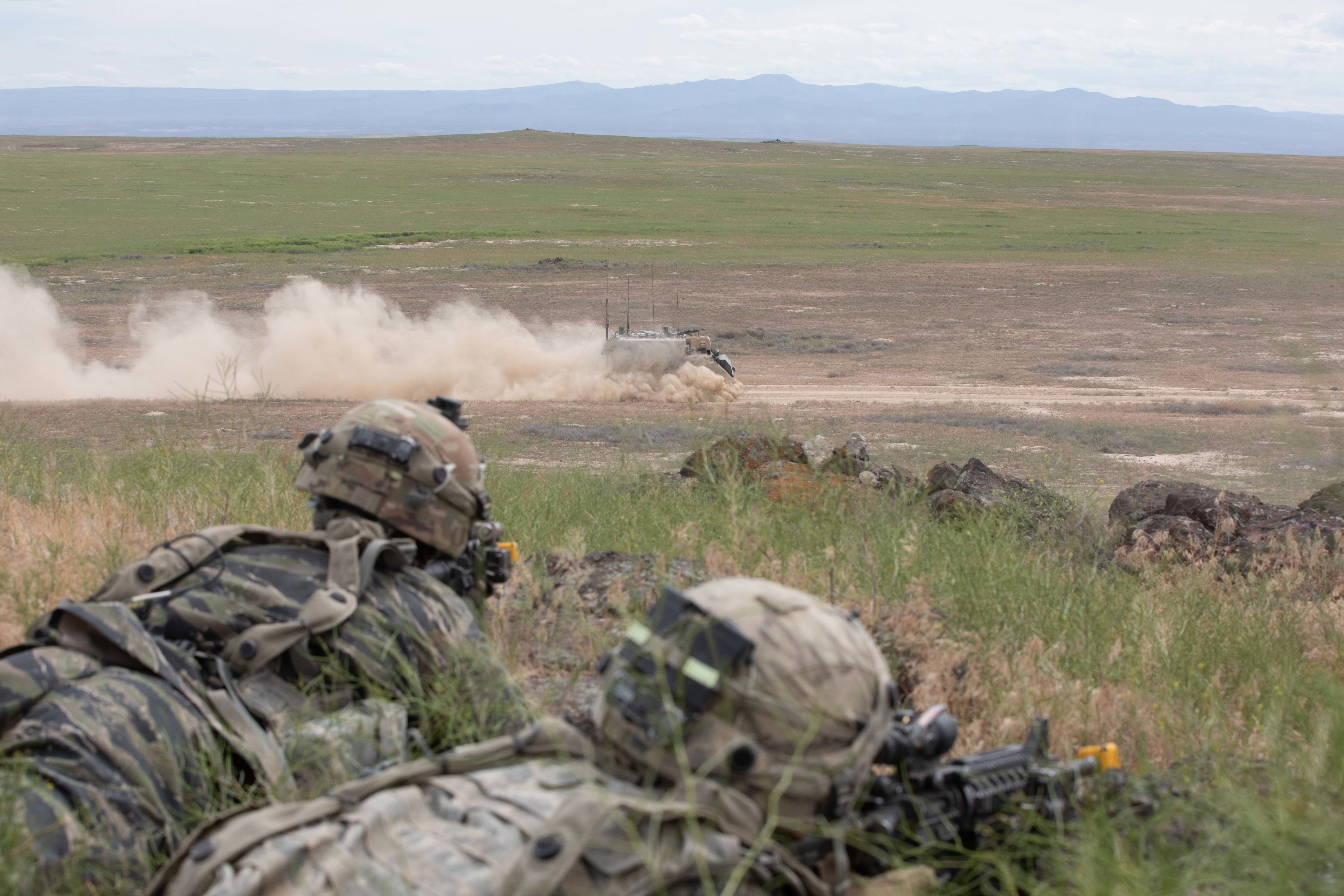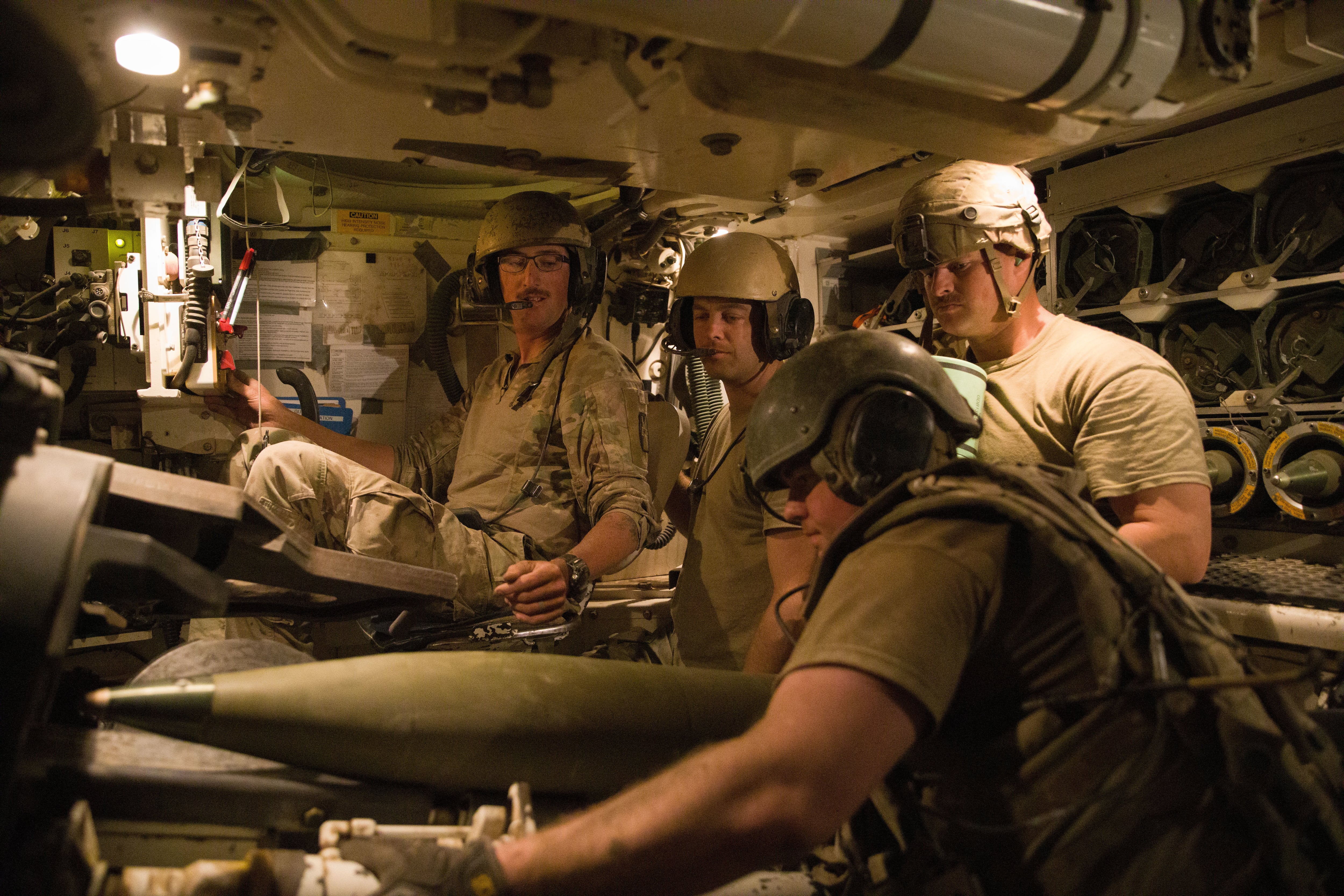If Army captains headed to one of the major combat training centers are looking for pointers, the officers who will challenge and evaluate them there recently shared a few.
At last month’s Maneuver Warfighter Conference on Fort Benning, Georgia, observer/controllers from each of the three major centers shared what they’ve seen, both good and bad, in units they face off against in simulated combat.
Capt. Galen King from the National Training Center at Fort Irwin, California; Capt. Andrew Mueller from the Joint Readiness Training Center at Fort Polk, Louisiana; and Capt. David Conser from the Joint Multinational Readiness Center in Germany listed key tips they hope company commanders might consider before their next rotation in the box.

“Units consistently struggle to accomplish basic tasks that enable success or survivability on the battlefield,” Conser said. Leaders, regardless of their echelon level, “do not clearly articulate the commander’s intent or concept of operation.”
Conser stressed that a CTC rotation is a rare chance for commanders to road test their unit; coming prepared and having thought through and rehearsed every detail of their mission is vital to a successful rotation.
Mueller told the audience that at the company level he’s seen a host of positive trends and challenges that seem common across formations.
On the positive side, more units are not using roads and are improving their use of high explosives. Units really know how to employ their weapons systems, and their understanding of small unit tactics has increased over past rotations, Mueller explained.
Common challenges included a lack of routine security measures, poor troop-leading procedures, a failure to prioritize tasks, and the ineffective use of terrain to conceal or maneuver. Many also had essentially nonfunctional command posts, Mueller added, and they failed to fight to, through and beyond the objective, misunderstanding the difference between movement and maneuver.
Essentially, movement is getting units and equipment, with associated logistical support, to a predetermined location. That could happen rolling down an interstate and pulling off to a sideroad before parking trucks at a range.
But maneuver uses the terrain features to gain a tactical advantage, remaining concealed until the opportune time to strike or execute a portion of the mission, whether that’s making contact with the enemy force or retaining a reconnaissance position to observe and collect information.
“Leaders aren’t comfortable maneuvering; they don’t understand transitions from movement to maneuver,” Mueller said. “So units will just do these charges across open ground and not use terrain to mask movement and stay concealed.”

Mueller advised future captains to train the doctrine at home station, ensure they’re delivering clear and concise communication, and practice that before their rotation. It’s also important to build preformatted products, such as checklists, to refer to in a pinch.
For his part, King reminded soldiers that their next rotation likely won’t be similar to the one during the counterinsurgency wars given the modern battlefield is transparent; you can see and be seen. Planners must design their process to account for brigade and division rotations, and the pace of logistics is going to strain expectations set from some Afghanistan and Iraq deployments, where everything needed was quickly available.
To replicate the operational environment the Army expects to see in future conflict, King underscored how much simulated fires have increased for units at the centers. The blue force in one rotation conducted 27 howitzer fire missions, sending more than 800 artillery rounds down range, another 400 rounds of 120mm mortars and 550 rockets from the M270 Multiple Launch Rocket System.
The red force sent more than 2,100 artillery rounds, along with nearly 500 mortar rounds and 1,827 rockets of the 122mm variety.
That’s a bit more than many saw on deployments to Iraq and Afghanistan.
Todd South has written about crime, courts, government and the military for multiple publications since 2004 and was named a 2014 Pulitzer finalist for a co-written project on witness intimidation. Todd is a Marine veteran of the Iraq War.





